Key Takeaways
- Rental yield is the money you earn from renting versus the property cost.
- It’s essential for evaluating investment properties wisely.
- Owning rentals involves more than just numbers; real-life experiences matter too.

Journey to Understanding Rental Yield
Rental yield is a key metric that shows how profitable your property investment can be. It measures the income you generate from renting compared to the property’s value, expressed as a percentage.
Understanding rental yield helps you make informed decisions about buying, managing, and pricing your property.
A higher yield often means better cash flow and investment opportunities, while a lower yield may signal potential concerns. By tracking rental yield over time, you can identify market trends.
Want to explore strategies to improve your rental yield and avoid common pitfalls?
There’s more to uncover.
Definition of Rental Yield
What exactly is rental yield, and why should you care?
Rental yield is a key financial metric that helps you understand the potential return on investment from a rental property. Simply put, it measures the income you can generate from renting out a property compared to its purchase price or value.
This yield is typically expressed as a percentage, making it easier to compare different investment opportunities.
When you’re considering buying a property to rent out, knowing the rental yield can help you evaluate whether it’s a smart investment.
A higher rental yield often indicates a better return on your investment, while a lower yield may suggest the property isn’t generating enough income to justify its cost.
Understanding rental yield also helps you make informed decisions about property management, pricing your rental, and analyzing market trends.
By keeping an eye on this metric, you can optimize your portfolio and guarantee you’re getting the most bang for your buck.
Ultimately, grasping what rental yield is and its significance can empower you as a property investor, guiding you toward choices that align with your financial goals.
How to Calculate Rental Yield
To calculate rental yield, you’ll need to understand two key formulas: gross rental yield and net rental yield.
The gross rental yield gives you a quick overview of potential earnings, while the net rental yield provides a clearer picture by accounting for expenses.
Let’s break down these calculations to help you assess your investment’s performance.
Gross Rental Yield Formula
Calculating gross rental yield is essential for investors looking to evaluate the profitability of their property investments. To determine your gross rental yield, you’ll use a simple formula: divide your annual rental income by the property’s purchase price, then multiply the result by 100 to get a percentage.
Here’s how it works in practice. First, figure out your total annual rental income. If you rent your property for $1,500 a month, that amounts to $18,000 a year ($1,500 x 12 months).
Next, take the property’s purchase price. Let’s say you bought the property for $200,000.
RELATED CONTENT
Now, plug those numbers into the formula: ($18,000 ÷ $200,000) x 100. When you do the math, you’ll get a gross rental yield of 9%.
This percentage gives you a quick snapshot of how well your property is performing compared to its cost. A higher gross rental yield often indicates a better investment opportunity, but remember, it doesn’t account for any expenses or taxes, so it’s just one piece of the investment puzzle.
Net Rental Yield Calculation
Understanding net rental yield is essential for investors, as it provides a more accurate picture of your property’s profitability by factoring in expenses.
To calculate net rental yield, start by determining your property’s annual rental income. This is the total rent you collect over a year. Next, identify your annual expenses, which can include property management fees, maintenance costs, insurance, property taxes, and any other costs related to managing your property.
Once you have both figures, subtract your total annual expenses from your annual rental income to find your net operating income (NOI). The formula looks like this:
Net Operating Income (NOI) = Annual Rental Income – Annual Expenses
After calculating your NOI, divide this figure by the property’s purchase price or current market value. Finally, multiply the result by 100 to express it as a percentage. The formula for net rental yield is:
Net Rental Yield = (Net Operating Income / Property Value) x 100
This percentage helps you assess the true profitability of your investment, allowing you to make informed decisions about your real estate portfolio.
Importance of Rental Yield
Understanding rental yield is essential for you as an investor.
It serves as a key indicator of your investment’s performance, helps assess your cash flow, and allows you to compare different markets effectively.
Investment Performance Indicator
Rental yield serves as a crucial investment performance indicator, helping you assess the profitability of your property. By calculating rental yield, you get a clear picture of how much return you can expect relative to your investment. It’s a straightforward metric that allows you to compare different investment opportunities, enabling you to make informed decisions about where to allocate your resources.
When you understand rental yield, you can quickly identify high-performing properties and spot those that may not deliver the returns you need. This helps you avoid potential pitfalls, ensuring your investments align with your financial goals.
Moreover, tracking rental yield over time offers insights into market trends and property performance. If you see a decline in yield, it may signal underlying issues that require attention. Conversely, an increasing yield could indicate a thriving market or effective property management.
Ultimately, knowing your rental yield empowers you to make strategic choices about buying, holding, or selling your property. By focusing on this indispensable indicator, you set yourself up for greater success in the competitive real estate market.
Cash Flow Assessment
Evaluating cash flow is essential for any property investor, as it directly relates to the rental yield and reveals how effectively your investment is generating income. By analyzing your cash flow, you can determine whether your rental property is producing enough income to cover expenses like mortgage payments, maintenance, and property management fees. If your rental yield is high, it generally means you’re generating a solid cash flow, which can contribute to your financial stability and growth.
Understanding cash flow also helps you make informed decisions about your property. If you’re consistently facing negative cash flow, it might be time to reevaluate your investment strategy. Are the rental rates competitive? Are there unnecessary expenses you can cut? Identifying these factors can improve your rental yield and overall investment performance.
Moreover, strong cash flow can provide you with the flexibility to reinvest in your property or explore new investment opportunities. In short, paying attention to your cash flow allows you to gauge the health of your investment while ensuring you’re on track to meet your financial goals.
Prioritizing cash flow evaluation will ultimately lead you to a more sustainable and profitable property investment journey.
Market Comparison Tool
Using a market comparison tool can greatly enhance your ability to assess rental yield, allowing you to make more informed investment decisions. By comparing property data side by side, you gain valuable insights into the potential returns of your investments. This can help you identify areas where you might find better rental yields.
Here’s why utilizing a market comparison tool is essential:
Benchmarking: You can easily see how your property stacks up against similar rentals in the area.
Identifying Trends: Spot market trends, such as rising rental prices or increasing vacancy rates, that could impact your yield.
Location Analysis: Understand which neighborhoods offer the best rental yields, helping you focus your search on high-potential areas.
Informed Negotiation: Armed with data, you can negotiate better purchase prices or rental agreements based on market insights.
Incorporating a market comparison tool into your investment strategy can considerably improve your chances of success, ensuring you’re making decisions backed by solid data.
With this approach, you’re not just guessing; you’re positioning yourself for profitable outcomes.
Factors Affecting Rental Yield
Several key factors influence rental yield, shaping how profitable an investment property can be for landlords.
First, location plays an essential role. Properties in high-demand areas typically attract higher rents, boosting your yield.
Next, property condition and amenities can greatly impact rental income. A well-maintained property with modern features often commands a better rental price than an outdated one.
Market demand and supply also affect rental yield. If there’s a shortage of rental properties in your area, you can charge more, increasing your yield. On the flip side, an oversupply can drive rents down, squeezing your profits.
Additionally, local laws and regulations can influence your returns. For instance, rent control policies might limit how much you can charge.
Comparing Rental Yields Across Properties
When comparing rental yields across properties, it’s vital to take into account each property’s unique characteristics and the local market dynamics.
Different factors can greatly affect the yield, so it’s important to analyze them carefully.
You should consider these key elements:
Location: Some areas have higher demand, which can lead to better rental prices.
Property Type: Residential, commercial, and vacation rentals can yield different returns based on market trends.
Condition and Amenities: Well-maintained properties with desirable features often attract higher rents.
Market Trends: Keeping an eye on local economic conditions can help you understand potential changes in rental demand.
Rental Yield Vs. Capital Growth
While rental yields provide immediate cash flow, capital growth represents the long-term appreciation potential of your property investment. Understanding the difference between these two concepts is essential for making informed decisions.
Rental yield focuses on the income your property generates relative to its value, offering you a steady stream of cash that can cover expenses and provide financial stability.
On the other hand, capital growth refers to the increase in your property’s value over time. This growth can greatly impact your overall return on investment, especially if you plan to sell the property in the future. While high rental yields might provide instant gratification, they mightn’t always indicate a property with strong capital growth potential.
When evaluating properties, consider your investment goals. If you need immediate income, prioritize rental yield. However, if you’re looking to build wealth over time, capital growth may be more appealing.
Balancing both aspects can lead to a well-rounded investment strategy, allowing you to enjoy immediate returns while also securing your financial future through long-term appreciation. Ultimately, the choice depends on your personal financial situation and investment objectives.
Strategies to Improve Rental Yield
To maximize your rental yield, consider implementing strategic improvements that enhance the property’s appeal and attract quality tenants.
Focusing on these areas can make a significant difference in your rental income:
Upgrade Kitchens and Bathrooms: Modernize these spaces with new fixtures, appliances, or fresh paint to make them more appealing.
Enhance Curb Appeal: Invest in landscaping, fresh paint, or new front doors to create a welcoming first impression.
Offer Amenities: Consider adding features like in-unit laundry, parking, or outdoor spaces to increase desirability.
Adjust Rent Strategically: Regularly review and adjust rent based on market trends to guarantee you’re not underpricing your property.
Common Mistakes to Avoid
Avoiding common pitfalls can greatly impact your rental yield and overall investment success.
One mistake many investors make is underestimating expenses. It’s essential to factor in maintenance costs, property management fees, and vacancy periods. Neglecting these can lead to a false sense of profitability.
Another common error is failing to research the rental market. Always analyze local demand, rental prices, and trends before investing. Ignoring this can result in overpriced properties or insufficient rental income.
Overpricing your rental unit is also a significant misstep. Setting your rent too high can drive away potential tenants, leaving your property vacant longer than necessary. Conversely, underpricing can erode your yield.
Moreover, don’t underestimate the importance of tenant screening. Skipping this step can lead to problematic tenants who may damage your property or fail to pay rent consistently.
Lastly, remember to stay updated on property laws and regulations in your area. Ignoring legal requirements can lead to fines or even legal disputes.
Conclusion: Embracing the Rental Journey
Now that you’ve got the scoop on rental yield, you’re ready to take on the rental market!
Remember, it’s not only about calculating profits—it’s also about the fun (and sometimes crazy) experiences you’ll have with tenants.
Keep your calculator close and your sense of humor closer!
No related posts.





















